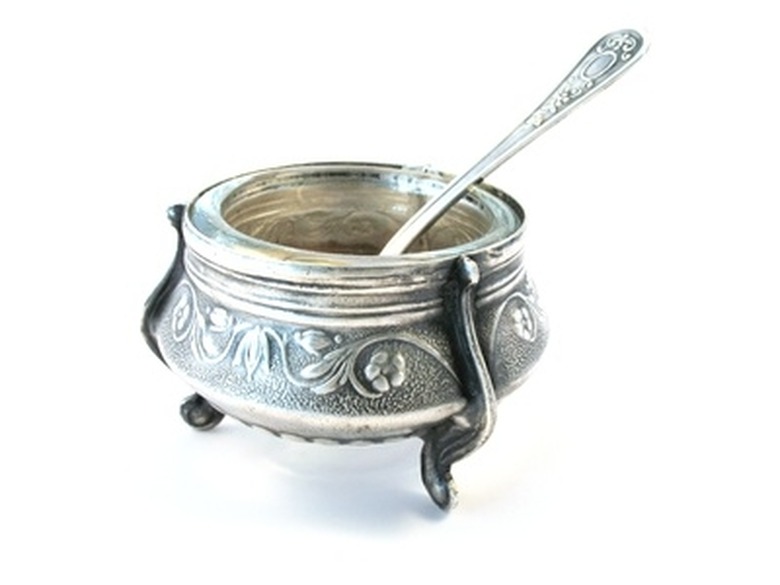How To Dissolve Silver
Acids react with and dissolve most metals, but to achieve full dissolution, the resulting compounds must also exhibit solubility in water. Silver, for example, will dissolve in hydrochloric acid, or HCl, to form silver chloride, or AgCl. Silver chloride, however, is insoluble in water, which means a white solid of AgCl crystals will form in the resulting solution. The full dissolution of silver requires nitric acid, or HNO3, which reacts with silver to form silver nitrate, a water-soluble compound.
Step 1
Put on rubber gloves pour 2 ounces of distilled water into a glass measuring cup. Add 1 ounce of concentrated nitric acid to the distilled water to bring the total volume to 3 oz.
Step 2
Transfer the nitric acid solution from the measuring cup to a small glass container, such as an empty baby-food jar.
Step 3
Place the jar containing the nitric acid solution in a well-ventilated area. Add the sample of silver to the jar and then stand away from the jar while the silver dissolves. The reaction of the nitric acid and silver produces choking orange nitric oxide fumes. Do not inhale these fumes or allow them to contact your eyes.
Step 4
Gently swirl the solution after the production of orange fumes has subsided. Continue to periodically swirl the solution until all of the silver has dissolved. For small samples of silver, the process should only require a few minutes.
Things Needed
- Rubber gloves
- Safety goggles
- Distilled water
- 8-ounce glass measuring cup
- Concentrated nitric acid
- Small glass jar
- Silver metal
- Baking soda
TL;DR (Too Long; Didn't Read)
Clean up any spilled nitric acid by dousing it with baking soda. This will neutralize the acid and render to safe to be washed down a sink or drain.
Warning
Nitric acid is corrosive to skin. Wear gloves and eye protection any time you handle concentrated acids. Do not allow nitric acid to contact bare skin and do not allow its fumes to contact your eyes or mucous membranes. Prior to using nitric acid, familiarize yourself with its hazards by reading the material safety data sheet provided in the Resources.
Silver nitrate will stain skin and clothing.
Cite This Article
MLA
Brubaker, Jack. "How To Dissolve Silver" sciencing.com, https://www.sciencing.com/dissolve-silver-8254040/. 24 April 2017.
APA
Brubaker, Jack. (2017, April 24). How To Dissolve Silver. sciencing.com. Retrieved from https://www.sciencing.com/dissolve-silver-8254040/
Chicago
Brubaker, Jack. How To Dissolve Silver last modified March 24, 2022. https://www.sciencing.com/dissolve-silver-8254040/
